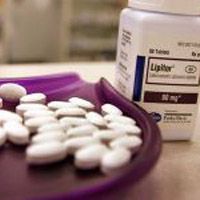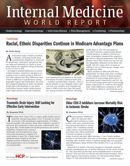Publication
Article
Internal Medicine World Report
Prediction Ratios for Atherosclerosis Cardiovascular Disease Factors Do Not Match Actual Use
Author(s):
Attempts to calibrate statin use, revascularization procedures, and the underascertainment of atherosclerosic cardiovascular disease have not matched the current prediction ratios.

Statin use, revascularization procedures, and the underascertainment of events do not explain the discrepancy between observed rates of atherosclerosic cardiovascular disease (ASCVD) in the Women’s Health Study (WHS) and those predicted by the American College of Cardiology/ American Heart Association (ACC/AHA) pooled cohort equations, according to findings published in JAMA Internal Medicine.
Nancy R. Cook, ScD and Paul M. Ridker, MD from the Brigham and Women’s Hospital in Boston, Massachusetts aimed to determine whether increased use of statins over time, incident coronary revascularization procedures, or underascertainment of vascular events explain overestimated cardiovascular risk in many studies. The researchers noted the reasons for the discrepancies were unclear in the current literature, so they examined ASCVDs — defined as myocardial infarction, any stroke, or death due to cardiovascular disease – throughout the WHS.
The WHS encompasses 27,542 women aged 45 to 79 years who are free of cardiovascular disease, cancer, or other major illnesses from baseline in 1992 to 1995. The women were followed for an average of 10 years to access their plasma lipids and other risk factors.
During this period, 632 women experienced ASCVD, though the risk from the pooled cohort equations was 3.6% over 10 years. Myocardial infarctions occurred in 250 women, 302 women experienced a stroke (while 3 from that group also experienced a myocardial infarction), and there were 83 deaths due to cardiovascular disease. Revascularization procedures occurred in 523 women, of whom 343 had no prior ASCVD events. Predicted risk over 10 years was about 10%, though it stayed at 1.4% on average and peaked at 5.2%. Use of statins was 3.2% at baseline and increased to 22% overall during the 10 year period.
The researchers wrote they thought one reason for the discrepancies was that the WHS and the Physicians’ Health Study were both trials of health professionals. Registered nurses comprised 75% of the WHS study, while another 15 were practical nurses. Those 2 cohorts may have been at lower risk than more contemporary cohorts, the researchers acknowledged.
Another criticism of the WHS is that much of the data was self reported and validated via patients’ medical records. Women self reported their ASCVD and it was later validated by the research team. Blood pressure was self reported as well, and demonstrated similar measures in other female health professional cohorts. Diabetes mellitus status was self reported, and researchers were able to confirm 91% of cases.
“The pooled cohort equations have now been found to over predict the rate of CVD in at least 7 external validation cohorts,” the authors concluded. “While alternative explanations may exist, we found that the use of statins, revascularizations, or underascertainment could not explain the extent of overestimation in the WHS. Recalibration of the pooled cohort equations using available contemporary data sets might provide a solution to this problem.”
